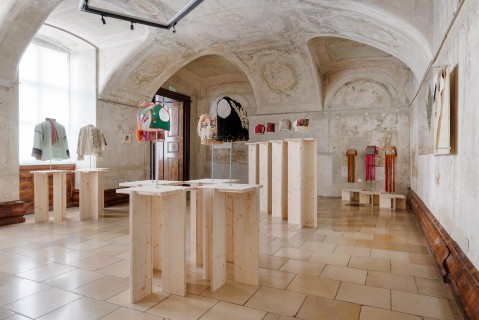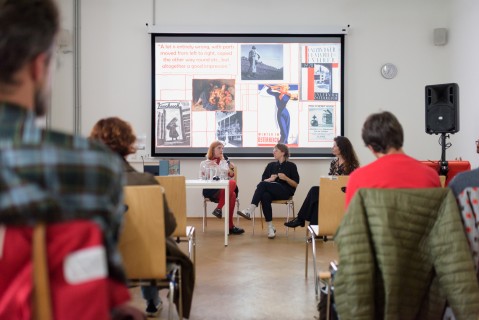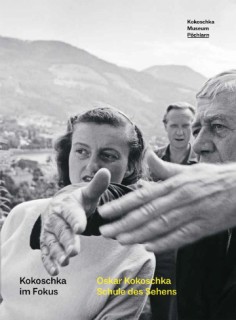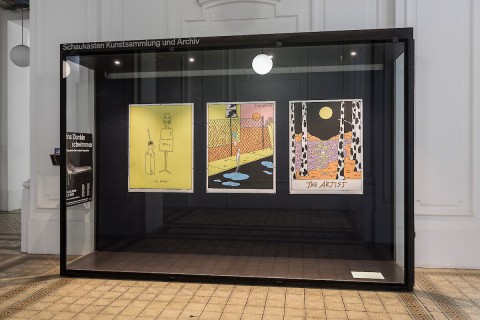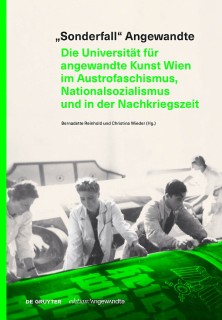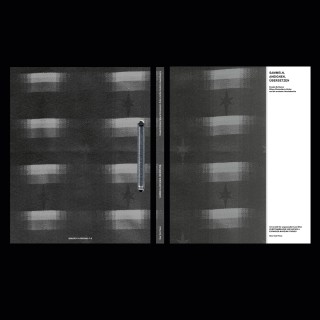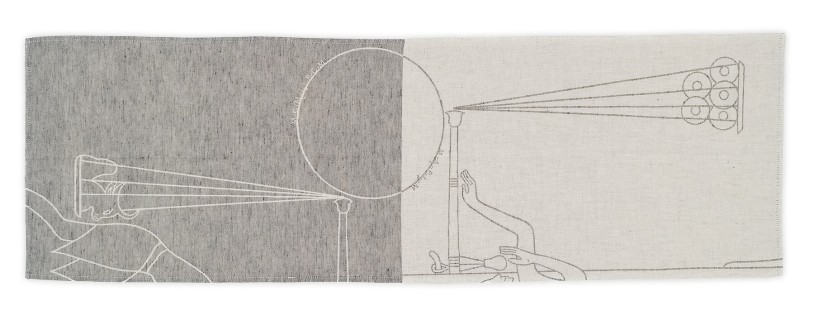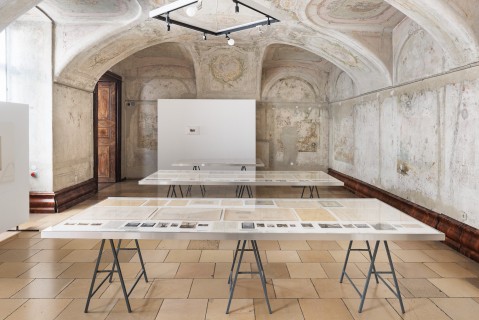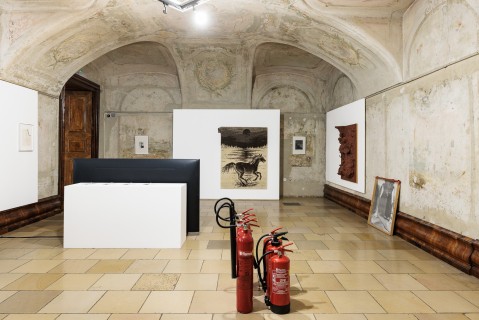Head
of Department: Sen. Sc. Mag. phil. Cosima Rainer
Deputy Directors: OR Silvia
Herkt, MA, BA & Sen. Sc. Mag. Stefanie Kitzberger
Kindly note our closure period from
December 1, 2025 – May 31, 2026
Due to extensive collection maintenance, Collection and Archive of
the University of Applied Arts Vienna will suspend its services (research inquiries, processing of loan and reproduction requests,
support for researchers, guided tours, a.o.) from December 1, 2025, to May 31, 2026.
The Collection and Archive
institute conceives of itself as both the material memory of the University of Applied Arts Vienna and an instrument for its
continuing development. Its work combines portfolio maintenance, documentation, research, and teaching.
Founded in 1980
on the initiative of the artist and then-rector Oswald Oberhuber as a teaching collection to encourage artistic practice among
students, the institute is today just as public-facing as it is directed toward intra-university structures. The Collection
and Archive holdings are regularly presented as loans on the international stage. They document the institutional history
of the University since its founding in 1867 as the School of Arts and Crafts of the Imperial Royal Austrian Museum for Art
and Industry, the diverse artistic developments of Viennese Modernism, and the transnational careers and networks of the protagonists
connected with the University of Applied Arts. As objects of exhibition and research, the holdings play a significant role
in the dialogue between the University and the greater public. The institute presents them in a variety of formats, ranging
from specialist consulting, exhibition conception and design, courses, conferences, talk series, publications, and collected
editions, to cooperations with artists, other institutes and departments of the University of Applied Arts, and international
partners.
At the heart of all its initiatives, a university of art is engaged in the continuous renegotiation of the
very concept of art. We understand our work as an actualizing, recontextualizing, and experimental practice – one that facilitates
new, critical perspectives and renders visible previously suppressed positions. In all our projects, we aim to shape contemporary
discourse and contribute to the University of Applied Arts Vienna’ position in both the international field of art and contemporary
society. Alongside the acquisition of artistic works and primary sources, we support and develop new productions with a connection
to the institute’s key areas of focus. These include the historiography of Viennese Modernism and the processing of the University’s
history – particularly with an intersectional reference to women’s and gender history; the field of tension between applied
and fine art; the exhibition as an artistic form; the examination of structural conditions of the marginalization of
designers and artists; the relationship between a work and its documentation; and seemingly subordinate forms
of production and collaborative work.
Collection Holdings
The Collection currently holds
numerous objects from all areas of applied and fine arts of the twentieth and twenty-first centuries, particularly from Viennese
Modernism. These include drawings, posters, furniture, textiles, photographs, ceramic pieces, paintings, objects, and architectural
models by Fred Adlmüller, Friedrich Berzeviczy-Pallavicini, Friedl Dicker-Brandeis, Josef Hoffmann, Gertrud Höchsmann, Oskar
Kokoschka, Anton Kolig, Adele List, Bertold Löffler, Elly Niebuhr, Otto Niedermoser, Oswald Oberhuber, Victor J. Papanek,
Franz Schuster, Margarete Schütte-Lihotzky, Peter Weibel, Emmy Zweybrück, the Wiener Werkstätte, and Vienna Kineticism, as
well as Baroque and domestic-industry textiles from the historical teaching material collections of Carl Karger and Rosalia
Rothansl, and from the private collection of Mileva Stoisavjlevic-Roller.




